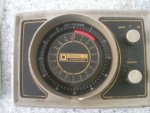john_morris_uk
Well-Known Member
Best instrument on a yacht for me.
That and the echo sounder.Best instrument on a yacht for me.
Last week I helped sail our daughters little Pandora 700 from Portsmouth to Cherbourg. No plotter, no radar and no AIS. We used a combination of HBC and Navionics on our phones. As the ships compass hadn’t been swung, one of the first things I did was to make sure it was reading accurately!
We did do some basic passage planning to make sure we didn’t end up down wind and down tide of our destination. In the event we touched over 8 knots over the ground as the tide took us past Pte de Barfleur.

